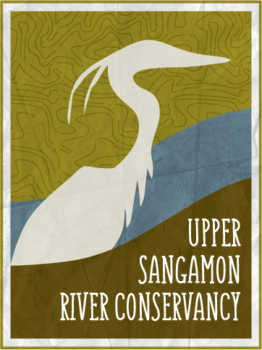“When in the Course of human events, it becomes necessary for one people to become better informed about the world around them and to demonstrate the Superiority of their continent to those Europeans, they should take up Citizen Science.”
So wrote Thomas Jefferson in 1776.
Well, he didn’t actually write that of course. But he could have. He should have.
Because Citizen Science was Jefferson’s Second Great Vision (just after democracy, proclaiming Independence for his Nation and then defeating the British).
So from 1776 to 1812, Jefferson passed out thermometers to deputies and recruits throughout Virginia (including Meriweather Lewis and William Clark) with instructions to take twice daily observations of temperature and wind direction.
According to an article in the Scientific American, Jefferson created a near complete series of weather observations that allowed him to dash the theory of degeneracy: “the idea that the temperature and humidity of the New World produced animals that were smaller, weaker and just plain inferior to their European counterparts.”
Jefferson’s citizen science data clearly demonstrated “that American had a higher sunny-to-cloudy day ratio than Europe.” So there.
Jefferson’s Second Vision “relied on citizens relishing civic duty and claiming their right to be informed and educated in order to self-govern and curb corruption, privilege and aristocracy.”
Across the nation (and indeed, the world), ordinary citizens count butterflies, tally washed-up garbage on beaches, count the pulsing of fireflies, and record bird species at backyard feeders, even far North of the Arctic Circle the Inuit measure ice thickness.
And today, Jefferson’s Second Vision is alive and well right here in Mahomet.
Which brings us to the Mahomet Citizen Scientist, which is more than just a clever title for a column in a similarly named newspaper.
Citizen scientists here in Mahomet participate in the Riverwatch Program, a program of the National Great Rivers Research and Education Center in East Alton, Illinois, with the partners of the U of I in Urbana-Champaign, the Illinois Natural History Survey, and Lewis and Clark (sound familiar?) Community College.
According to their website, http://www.ngrrec.org/riverwatch , the Riverwatch vision is “… a collaborative river-monitoring network of citizens, organizations, agencies, private interests and governments working together to ensure the health and beauty of Illinois streams and watersheds.”
They go on to say: “RiverWatch certified volunteers, referred to as Citizen Scientists, collect high quality scientific data that will subsequently be used by professionals and the general public to gauge long-term trends in stream health, develop land management strategies, identify potentially degraded waters, and assess the effectiveness of restoration projects.”
The focus of this effort locally has mostly been out on the Sangamon River. Here, our local Citizen Scientist team has been monitoring sites along the Sangamon River for nearly five years and has since added four of its tributaries, identifying, sorting and counting macro-invertebrate species . And this past year, the team has added an annual mussel survey to their data collection efforts.
The macro-invertebrates that inhabit a river or stream turn out to be very good indicators of stream health. Certain species, including mayflies, stoneflies and caddisflies are particularly high value species, in the sense that higher value species indicate less organic pollution. These species are the most diverse in natural streams and their numbers decline as watershed disturbance increases.
To date, the site that has tested the best for water quality has been at the Sangamon River Forest Preserve, north of Mahomet. Oddly, the tributary streams (Crooked Creek, Pancake Slough, Buffalo Trace, and Wildcat Slough) test poor to very poor, while the Sangamon River tests good to excellent.
But, as local Mahomet Citizen Scientist Bruce Colravy explains: “freshwater mussels and macro-invertebrates are not only good indicators of organic pollution, they play an important role in processing organic pollution and consequently providing us with cleaner water.”
The Scientific American article relates that “Citizen science gives people an unselfish, guilt-free reason to take a break, go outside, and slow down enough to observe their world. In return they get discoveries, large and small, that they never forget.”
And according to Colravy, “the most important part of the Riverwatch program for me is that it gets people engaged and learning about our rivers and streams. The mussel survey and invertebrate monitoring reveals these usually unseen and very important players in the health of our rivers and streams, and they are fascinating in their own right.”
So, when in the Course of human Independence Day celebration events, take time to relish your civic duty like it’s 1799; like Thomas Jefferson, author of the Declaration of Independence, carrying out his Second Grand Vision. Claim your right to be informed and educated in order to self-govern and curb corruption, privilege and aristocracy!
Get out there and monitor some invertebrates this Saturday in the Sangamon River!
Thomas Jefferson would be proud.
Appeared as Notes from the River, Mahomet Citizen, June 27, 2013, by Scott Hays


